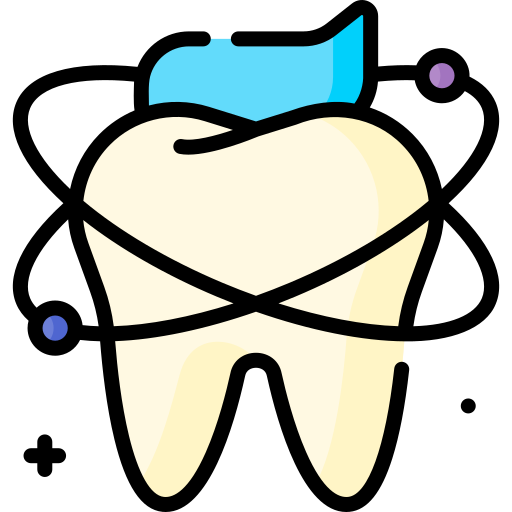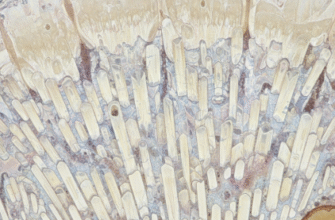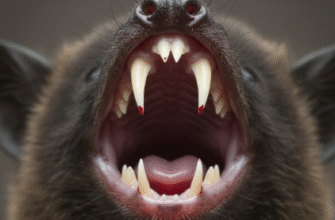The intricate world within our mouths relies heavily on a silent hero: collagen. This most abundant protein in the human body isn’t just crucial for skin elasticity or joint health; it’s the fundamental scaffolding for nearly all dental tissues, providing strength, resilience, and organization. Understanding the different types of collagen and their specific roles in structures like dentin, pulp, cementum, and the periodontal ligament offers a deeper appreciation for the complexity and functionality of our teeth and their supporting apparatus.
The Versatile Nature of Collagen in Oral Structures
Collagen is not a monolith. It’s a family of proteins, each with a unique amino acid sequence that dictates its structure and function. The hallmark of most collagens is their triple helix- A structure formed by three polypeptide chains, known as alpha-chains, winding around each other like strands of a rope. This basic design gives collagen its incredible tensile strength. However, variations in these alpha-chains, how they assemble into fibrils, and how these fibrils interact with other molecules lead to a remarkable diversity of collagen types. Some form long, thick fibers ideal for resisting pulling forces, while others create delicate networks or act as molecular bridges.
In dental tissues, this diversity is on full display. Different collagens are strategically deployed to meet the unique mechanical and biological demands of each component, from the hard, mineralized dentin to the soft, dynamic pulp and the resilient periodontal ligament that holds teeth in place.
Dentin’s Collagenous Core
Dentin, the hard tissue forming the bulk of the tooth beneath the enamel, is a composite material, approximately 70% inorganic hydroxyapatite crystals and 20% organic matrix, with the remaining 10% being water. A staggering 90% of this organic matrix is composed of collagen, primarily Type I collagen.
Type I Collagen: The Architect of Dentin
Type I collagen is the undisputed champion in dentin. It forms a dense, three-dimensional network of fibrils that serves as the organic scaffold upon which hydroxyapatite crystals precipitate during dentinogenesis (dentin formation). These fibrils are meticulously organized, running predominantly parallel to the dentinal tubules in the intertubular dentin. This arrangement is critical for dentin’s toughness and its ability to support the overlying brittle enamel, preventing fractures. The precise diameter and packing of Type I collagen fibrils also influence the mineralization process, guiding crystal growth and contributing to dentin’s overall mechanical properties.
Minor but Mighty: Other Collagens in Dentin
While Type I dominates, other collagens play supporting roles. Type V collagen is often found associated with Type I fibrils. It’s believed to help regulate the diameter of Type I fibrils, ensuring they form correctly. Think of it as a quality control manager for the main structural component. Trace amounts of Type III collagen may also be present, particularly during early dentin development and in reparative dentin, where it contributes to the initial, less organized matrix formation before Type I takes over for more robust structuring.
The Fibrous Network of Dental Pulp
The dental pulp, the living heart of the tooth, is a soft connective tissue brimming with cells, blood vessels, and nerves. Collagen provides the structural framework that houses these vital components.
Type I and Type III Collagens: A Partnership in Pulp
Both Type I and Type III collagens are abundant in the dental pulp. Type I provides the primary structural support, forming a loose, fibrous meshwork throughout the pulp chamber. Type III collagen, often found in tissues requiring more elasticity and in areas of active remodeling, is also prevalent. It typically co-localizes with Type I fibrils, contributing to the pulp’s delicate yet resilient architecture. This combination allows the pulp to withstand the minor pressures and changes that occur within the confined space of the tooth.
Basement Membrane and Fibrillar Support: Type IV and V
Type IV collagen is a key component of basement membranes. In the pulp, it forms a crucial layer around blood vessels, providing structural integrity and regulating the passage of cells and molecules. It also surrounds Schwann cells, which myelinate nerve fibers. Type V collagen, similar to its role in dentin, is associated with Type I fibrils in the pulp, aiding in their proper assembly and organization, thus contributing to the overall stability of the pulpal extracellular matrix.
The diverse array of collagen types within dental tissues underscores a sophisticated biological design. Each type possesses unique structural properties, enabling it to fulfill specific roles, from providing sheer strength to facilitating cellular interactions. Understanding this molecular architecture is fundamental to appreciating the resilience and functionality of our teeth and their supporting structures.
Cementum: The Collagenous Anchor
Cementum is the thin, bone-like layer covering the tooth root, playing a critical role in attaching the tooth to the alveolar bone via the periodontal ligament. Like dentin, its organic matrix is rich in collagen.
Type I Collagen: The Foundation of Attachment
Unsurprisingly, Type I collagen is the major collagenous component of cementum, making up about 90% of its organic matrix. It exists in two forms: intrinsic fibers, produced by cementoblasts (cementum-forming cells) and running parallel to the root surface, and extrinsic fibers. These extrinsic fibers are the embedded ends of the periodontal ligament’s principal fibers, known as Sharpey’s fibers. These Sharpey’s fibers, predominantly Type I collagen, run perpendicular to the root surface and are crucial for anchoring the tooth, transmitting occlusal forces to the bone.
Contributions from Other Collagen Types
Type III collagen is also found in cementum, particularly in cellular cementum and during periods of repair or regeneration. It may contribute to the initial matrix formation and provide some flexibility. Additionally, Type XII collagen, a FACIT (Fibril Associated Collagens with Interrupted Triple helices) collagen, has been identified. FACIT collagens modulate the interactions between major fibrillar collagens and other matrix components, potentially influencing the organization and mechanical properties of the cementum-PDL interface.
The Periodontal Ligament (PDL): A Dynamic Collagen Sling
The periodontal ligament (PDL) is a specialized connective tissue that surrounds the tooth root, connecting it to the alveolar bone. It’s a remarkable tissue, acting as a shock absorber, facilitating tooth movement, and providing sensory information. Collagen fibers are its main constituents, responsible for its unique properties.
Type I Collagen: Resisting Forces in the PDL
The PDL is densely packed with collagen fibers, and once again, Type I collagen is the primary player. It forms the principal fiber bundles of the PDL (e.g., alveolar crest, horizontal, oblique, apical, and interradicular fibers). These well-organized bundles are strategically oriented to withstand and distribute the various forces exerted on teeth during chewing and other functions. The high tensile strength of Type I collagen is paramount for this role.
Type III Collagen: Providing Elasticity and Remodeling Capacity
Type III collagen is also a significant component of the PDL, often intermingled with Type I fibers. It contributes to the tissue’s resilience and elasticity. The PDL has a very high turnover rate, meaning its components are constantly being broken down and rebuilt. Type III collagen is particularly important during this remodeling process and in wound healing, often appearing early in tissue repair.
Specialized Collagens Fine-Tuning PDL Function
The PDL also contains other important collagens. Type V collagen helps regulate Type I fibril diameter. Type VI collagen forms a unique beaded-filament network that anchors larger structures like blood vessels and nerves within the PDL matrix and interacts with cells. Type XII collagen, a FACIT collagen, is thought to mediate the interaction of Type I fibrils with other matrix molecules and cells, contributing to the overall organization and biomechanical properties of the ligament. It may help the PDL adapt to mechanical stresses.
Collagens at Critical Junctions and Linings
Beyond the bulk tissues, specific collagens play vital roles at interfaces and in lining structures.
Type IV Collagen: The Basement Membrane Cornerstone
As mentioned with the pulp, Type IV collagen is the primary structural component of all basement membranes. These thin, sheet-like extracellular matrices separate different tissue types. During tooth development, a basement membrane containing Type IV collagen is crucial at the interface between the inner enamel epithelium and the dental papilla, guiding early tooth morphogenesis. It also forms the basement membranes of blood vessels throughout all dental tissues and underlies the oral epithelium.
Type VII Collagen: Anchoring the Epithelium
Type VII collagen is the main component of anchoring fibrils. These specialized structures secure the epithelial basement membrane to the underlying connective tissue. This is particularly important at the dentogingival junction, where the gingival epithelium attaches to the tooth surface, forming a critical seal against the external environment. The integrity of this attachment, mediated by Type VII collagen, is essential for periodontal health.
In essence, the diverse family of collagens works in concert to build and maintain the complex and highly functional tissues of the oral cavity. Each type, with its distinct structure and properties, contributes to a system that is both incredibly strong and remarkably adaptable, allowing our teeth to serve us throughout our lives.








